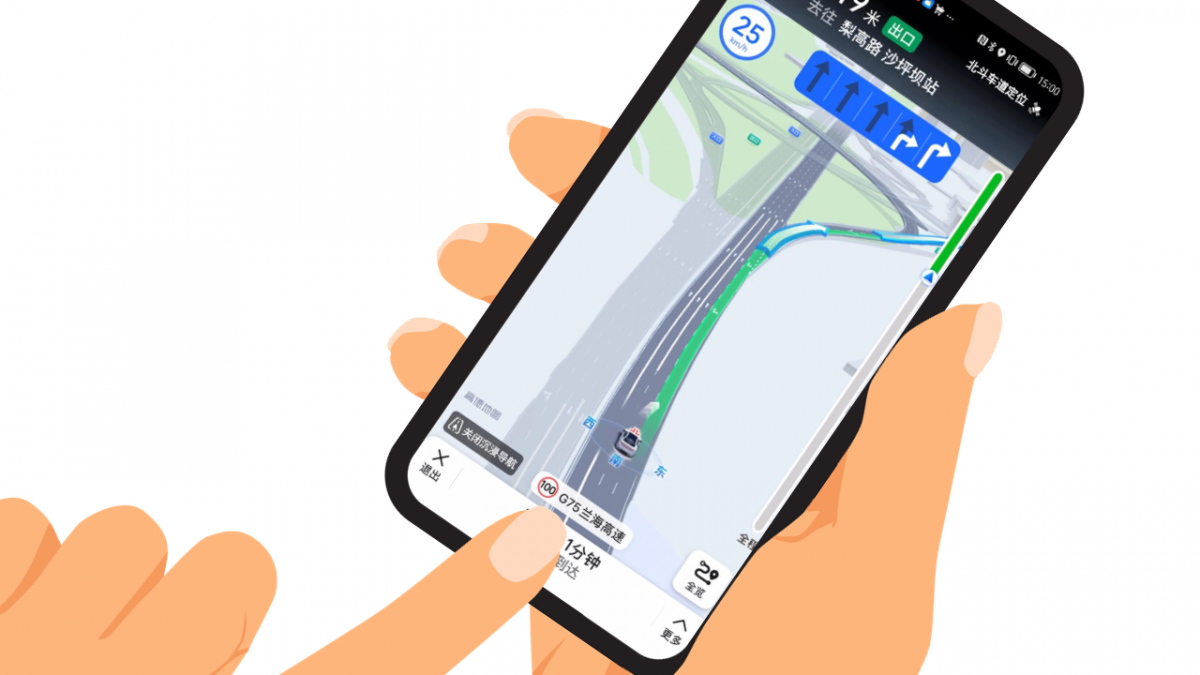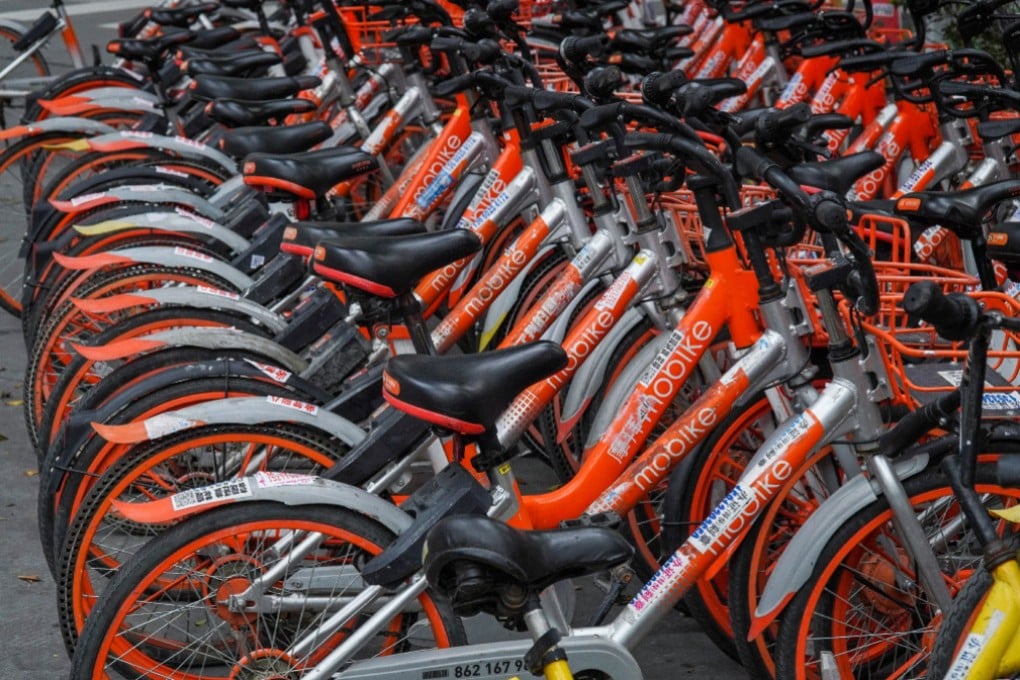Navigating Safely with Mobile Bike Lane Navigation Apps in China
Here at jusha.travel, we love sharing tips to make your China journey unforgettable! As China continues to embrace sustainable urban development, cycling has emerged as a popular and efficient way to explore its vibrant cities and beautiful landscapes. For travelers, navigating unknown streets on two wheels can be both exhilarating and a bit daunting. Thankfully, Mobile Bike Lane Navigation Apps have revolutionized this experience, making it safer and more convenient than ever. This post will delve into how these powerful tools, including prominent ones like Baidu Maps cycling, are enhancing urban exploration, ensuring your China bike-sharing safety, and offering insights into urban cycling China. We’ll also touch upon the seamless role of QR code travel in this ecosystem and how it empowers your local travel experiences.
 The Rise of Cycling Navigation in China
The Rise of Cycling Navigation in China
China has witnessed a significant transformation in its urban mobility landscape, largely driven by the boom in digital mapping and cycling solutions. Gone are the days when exploring China by bike meant relying solely on paper maps or guesswork. Today, platforms like Gaode Map (Amap) have spearheaded this change by introducing the first comprehensive online cycling map of China, featuring over 110 premium cycling routes. This initiative, a partnership with the China Cycling Association, marks a pivotal moment in providing structured, accessible navigation tailored for cyclists. For more details on this innovative development, check out Gaode Map’s groundbreaking launch. This technological leap perfectly complements the explosion of bike-sharing programs in major Chinese cities, which has made finding and using bikes remarkably easy through smartphone apps. These services utilize GPS technology to help users locate, unlock, and rent bikes seamlessly, fundamentally altering urban commuting and leisure, a transformation highlighted by this article on bike-sharing’s impact on Chinese travel.
 Key Features for a Safe and Seamless Ride
Key Features for a Safe and Seamless Ride
Modern cycling navigation apps in China are packed with features designed to enhance both convenience and safety for riders. These apps offer sophisticated route recommendations, including curated “premium cycling routes” that users can easily search and activate for exploration and trip planning. One of the most critical safety features is navigation broadcasts, providing real-time voice guidance that allows cyclists to keep their eyes on the road.
Beyond navigation, these apps are integrating advanced safety alerts. Thanks to the Beidou satellite navigation system, real-time safety monitoring offers vocal alerts for potential hazards or deviations from safer routes. For an in-depth look at these safety innovations, refer to Gaode Map’s latest features. Moreover, these apps foster a sense of community among cyclists through social interaction and activity tracking, allowing users to share updates and track their rides.
The integration with bike-sharing services is another game-changer. Apps facilitate locating and unlocking shared bikes directly from the map interface, streamlining the rental process. This seamless connection is essential for China bike-sharing safety, as it ensures that bikes are readily available and in designated areas. Leading apps also offer multimodal transit support, providing public transport, walking, and real-time traffic updates, making them incredibly versatile for all types of travelers. When it comes to finding your way around, even with the language barrier, understanding how to use these map apps is crucial. For useful tips on popular Chinese map apps like Baidu Maps (which, despite common perception, has minimal English support compared to others), Trip.com offers excellent guidance.
 Navigating the Urban Landscape: Tips for Visitors
Navigating the Urban Landscape: Tips for Visitors
Urban cycling China offers a unique way to experience the pulse of cities, but it comes with its own set of considerations, particularly for international visitors. While apps like Gaode Map and Baidu Maps cycling provide invaluable assistance, understanding the local context is key.
One of the primary challenges for foreign travelers is the language barrier. Most primary functions, instructions, and even route names within these apps are predominantly in Chinese. However, icons and layouts often mirror familiar designs, such as the blue location dot, which can become intuitive with a bit of practice. Our advice: try to save and search destinations using Chinese characters for the best results, and familiarize yourself with core icons during your initial days.
For seamless integration with China’s impressive bike-sharing ecosystem, a clear understanding of QR code travel is essential. Apps like Meituan Bike (formerly Mobike, as detailed in this article about bike-sharing’s revolution) allow users to effortlessly locate available shared bikes via GPS and unlock them with a simple QR code scan. This system has significantly cut down commute times for many and offers a flexible “last-mile” solution, reducing reliance on other transport for shorter distances. This capability is pivotal for spontaneous local travel experiences.
Beyond the software, hardware considerations also play a role. Cyclists often prefer Android phones due to features like swappable batteries, weatherproofing, and expandable storage, crucial for longer rides and navigating unpredictable weather. Secure bike mounts, such as those by Herbert and Richter, ensure your phone is visible and accessible. Always carry spare batteries or ensure your phone has excellent battery life, especially when relying heavily on GPS. For comprehensive advice on using smartphones for bike navigation, check out this guide on cycling.
 Ensuring Your Safety On Two Wheels
Ensuring Your Safety On Two Wheels
Safety is paramount, and Chinese navigation apps are continuously evolving to address potential risks. Recent advancements include Beidou-Backed Safety Warning Systems. By leveraging China’s Beidou satellite system, apps can monitor riders in real-time and issue instant voice warnings about road hazards, busy intersections, or deviations from safer routes. This proactive approach significantly enhances China bike-sharing safety. Academic research, such as studies on understanding electric bike accidents, also contributes to developing enhanced app-based safety recommendations.
Here are some practical tips for navigating safely:
* _Study Your Route First:_ Always review recommended cycling routes within the app for safer, bike-friendly paths.
* _Use Safety Alerts:_ Keep your navigation volume on to hear real-time safety warnings.
* _Stay Visible and Predictable:_ Universal cycling safety rules apply—use lights, wear reflective gear, and always obey local traffic laws.
* _Prepare for Translation:_ Consider using a companion translation app or learning key Chinese navigation terms to overcome any language barriers as highlighted by Trip.com’s tips on Chinese map apps.
* _Update Your Apps Regularly:_ Ensure you always have the latest versions of your apps to benefit from the newest safety features and map updates.
Conclusion
The advent of sophisticated Mobile Bike Lane Navigation Apps has truly transformed the landscape of cycling in China, making it an accessible and enjoyable option for travelers. From the detailed routing of Baidu Maps cycling to the robust safety features powered by Beidou, and the convenience of QR code travel for bike-sharing, these technologies empower you to explore China’s dynamic cities and serene backroads with confidence. They enhance not just China bike-sharing safety but also your overall urban cycling China experience, allowing for authentic and enriching local travel experiences. As an increasingly popular and eco-friendly mode of transport, cycling in China, guided by these innovative apps, promises adventure at every turn.
We hope this guide inspires you to embrace the freedom of two wheels on your next trip to China. Have you used any of these apps or explored China by bike? Share your experiences in the comments below! For more insightful articles and tips on making the most of your journey to China, be sure to visit jusha.travel. Start planning your unforgettable adventure today!

